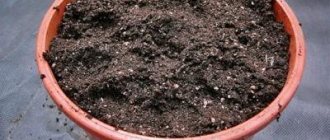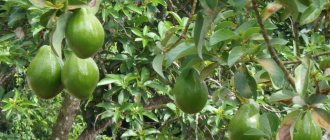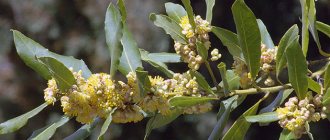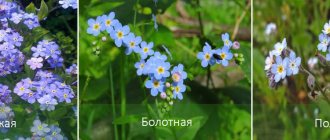Description of the plant gravilat
The perennial plant gravilat belongs to the Rosaceae family. The Russian botanical name gravilat comes from the Russified Latin name for the clove root “radixcaryophyllatae” (caryophyllate).
Gravilat is a herbaceous plant up to 60 cm high. It has a thick, oblique, creeping, unbranched rhizome on which a leaf rosette is formed. The stem of the plant is straight, has edges and a soft edge, branches weakly, and closer to the top it is covered with white hairs.
The leaves located at the root have long petioles, they are intermittent, imparipinnate, with a large outermost lobe and 3-9 rounded-ovate, unevenly serrated leaflets. There are few stem leaves. They consist of 3 parts and have short petioles. The upper leaves consist of 3 lobes. The leaves are covered with a small amount of hairs on both sides.
Flowers of garden varieties of the plant are 3-4 cm in diameter. They are open, with smooth or double petals of white, red, yellow, pink, orange and other shades. The calyx consists of two rows of sepals - 5 large internal and 5 small internal.
Gravilata flowers may face upward or bell-shaped. There are often 5 petals, but there are varieties that have more. Gravilata inflorescences have the shape of a panicle or umbrella and consist of 3-4 flowers.
Flowering time and its duration depend on the plant variety. Some varieties bloom twice: from May to July and from August to October, some bloom all season without interruption. For most varieties, flowering time falls in mid-summer: in this case, gravilat flowers appear in late June-early July, flowering continues for about two months.
The plant is pollinated by insects. After flowering, a fruit is formed, making it possible to grow from seeds. The fruit consists of many hairy nuts - seeds with long hooked spouts at the end, with which they cling to animal fur or human clothing and thus spread. The fruits ripen in September.
Description and features
Gravilat is a perennial plant from the rose family that grows all over the planet, with the only exception being Antarctica. It has many different names, each nation has its own.
The first mention is found in Greek medical books, where the beneficial properties of the gravilat root ; the stems and rhizome have a light clove aroma. That is why it was used to flavor many tinctures and medicines.
Gravilat is considered a meadow plant, less often it can be found in forest thickets. The stem is small, erect. At the base there is a rosette with larger leaves (pinnately lobed, pinnately dissected), at the top the leaves are smaller, shaped like three cut lobes. The uppermost leaves are small, entire.
Gravilata roots have healing properties
The inflorescences of perennial gravilata are paniculate and umbellate. The flowers are collected in brushes of 3-5 pieces, the colors are yellow, white and pink. The open flowers look up, resembling bells.
Pollination occurs with the help of insects. Flowering occurs in May/June. The fruit is concentrated in a multi-nut with a large number of seeds. The seeds are slightly elongated, with tails or curved ends. After ripening they fall off easily.
In nature, there are more than 50 types of gravilat, approximately 20 varieties have been cultivated by humans. The plant is distributed on all continents in temperate zones. The steppe zone is the abode of the gravilate; it can be found in forest plantations or on the outskirts of mixed forests.
Gravilat: varieties and varieties
The flower is represented by 50 species. The most popular are city gravilat, river gravilat, mountain gravilat, Chilean gravilat, Aleppo, Bulgarian, Canadian and others. 20 species with decorative properties are grown.
Most varieties are of the Chilean or streamside variety. In addition, there is a group of hybrid varieties. The most famous varieties of the Chilean variety in our country:
- Lady Stratheden with yellow double flowers up to 4 cm in diameter, collected in panicles. The flowering time of the variety falls at the end of July-beginning of August and lasts 45-60 days.
- Another variety of the Chilean variety of gravilat is Mrs. Bradshaw. This plant is up to 80 cm high with large red double flowers, winter-hardy, can withstand down to -29°C.
- Blazingsunset. Characterized by abundant bright flowers. Flowering time is continuous from June to September. The variety is characterized by the formation of bushes from embossed leaves. With its help you can decorate a flower bed around the perimeter or the front edge of a border.
- Doublesunrise. The inflorescences of this variety have the shape of a basket with red flowers.
- Cosmopolitan. Large, double flowers of this variety have an interesting petal color: cream with pink edging.
- The Fireball variety is characterized by scarlet-orange color of flowers. They are large, sometimes more than 4 cm in diameter. The plant blooms in July for a month.
- Golden ball. The variety is characterized by yellow flowers. Flowering time of the variety: from May to August.
Popular hybrid varieties:
- Fire fell. It is characterized by red-orange flowers.
- Gladys Perry. The variety has bright red flowers.
- Princess Juliana with dark yellow flowers.
- Ruby. Flowers of the variety are carmine or scarlet.
The most popular variety of the riverside type of gravilat is Leonardo Var. It has a tall (up to 75 cm) stem with a reddish edge. The color of the drooping, bell-shaped flowers is different: copper-pink, bronze, red-brown, yellow with red veins.
When to plant gravilat
Gravilat can be divided and replanted in spring and autumn. However, terry varieties are best planted in early spring, as soon as the soil warms up a little. At this time, gravilate tolerates manipulation with roots more easily. In addition, over the summer the plant has time to take root well and prepare for winter.
Imported gravilats can be planted in a permanent place only when the threat of frost has passed and only in the spring, not in the fall.
Landing dates according to the lunar calendar for 2022
| Month | Better days | Month | Better days |
| January | 25-27, 29-31 | July | 6-8, 23-27, 30, 31 |
| February | 3-14, 17-23 | August | 2-6, 8-10, 12, 14, 22-24, 29-31 |
| March | 3-8 | September | 5-8, 13-15 |
| April | 3-7, 12-15, 25-30 | October | 2-4, 8-15, 20-22 |
| May | 2-5, 7-12, 18-25, 27-29 | november | 3, 4, 9-12, 19-23 |
| June | 1-3, 6-8, 23-26 | December | 1, 2, 4-6 |
In 2022, unfavorable days fall on the following dates:
- January – 2, 3, 17, 18
- February – 1, 2, 16, 28
- March – 1, 2, 18, 27, 28
- April – 1, 2, 16, 23
- May – 1, 16, 30
- June -14, 18, 29
- July – 13, 14, 28, 29
- August – 11, 12, 27-28
- September: 9-10, 26, 27
- October: 9, 10, 25, 26
- November: 1, 2, 7-9, 24, 25, 28, 29
- December: 7-9, 23-25
@nannys_garden_world_, Instagram
Plant care
Gravilat, planting and caring for which is quite simple, does not require special growing conditions. He is unpretentious and almost not susceptible to disease.
Subtleties of landing
Gravilat is not picky about the soil. It can grow on clay, loamy soil, sand, and peat. But too damp and acidic soils are not suitable for perennials, so the area must be well drained before planting. To do this, add mulch or sand to the soil. Gravilat normally tolerates moderate shade, but develops better in well-lit areas. In this case, flowering occurs earlier.
Seedlings can be planted in spring or autumn. The bushes are planted at a distance of 20-30 cm from each other. They will quickly grow and fill empty spaces. Before planting, add compost, humus, mullein or other organic fertilizer to the holes. Seedlings or cuttings are planted in the prepared holes and the soil is moistened abundantly.
Fertilizers and watering
The perennial requires regular moderate watering under the roots. It is important to remember that the plant does not tolerate prolonged waterlogging. If the area is swampy or located in a damp lowland, the flowerbed with gravel should be raised and drained. Streamline varieties can also withstand waterlogged soils.
Before flowering begins, mineral fertilizing containing nitrogen, phosphorus and potassium fertilizers is applied to the soil. During flowering, in order to prolong it, the plant is fed twice with phosphorus-potassium fertilizers.
Transfer
The plant does not tolerate transplantation well, but the flower needs to be replanted and the bush divided every 4 years. The procedure promotes more intense flowering, active growth and development of the plant.
The bushes need to be replanted in soil prepared as for planting in spring or autumn after flowering has completed. Replanting may be necessary if the plant's rhizome is affected by rot. The soil must be treated with a special preparation.
Gravilate: care after flowering
In order to prolong flowering, it is important to regularly prune already faded flowers.
For the winter, perennials, especially hybrid varieties or plants with double flowers, require shelter from spruce branches or dry foliage.
Landing
Gravilat is considered a very unpretentious plant, and due to the fact that it is long-lived and completely frost-resistant, it can be easily planted in gardens.
Requirements for soil and planting site
Gravilat prefers soil with the following characteristics:
- well drained;
- with a moderate level of fertility;
- capable of retaining moisture;
- plants grow well in acidic and alkaline soils, sandy, clay and limestone;
- cannot withstand overdried soils.
Some species, such as river grass, grow ideally in partial shade, others do well in the sun, provided that it is not too intense - the flowers fade easily in the heat.
On the other hand, gravilat does not like stagnation of water in the soil in winter, since the rhizomes can easily rot. Therefore, the plant must first of all provide good drainage!
The creeping gravilat species is an alpine type plant that requires moderately moist, not very fertile, very permeable and even rocky or gravelly soil, which will be slightly moist in summer during flowering. It is recommended to mulch the soil with crushed stone. Does not tolerate waterlogging of roots. It occurs naturally in granitic (acidic) and calcareous (alkaline) soils, so there are no special expectations regarding soil pH. Garden soil will be fine, you just need to mix it with crushed stone and gravel.
This species grows at alpine heights, where it is cooler than in the valleys. Although in the mountains it blooms in open spaces, the air temperature there is not hot. It is worth placing the plant in a place where it will receive 8 hours of full sun in the morning, and then soft shade. This is a compromise between thermal and light requirements.
Landing
Gravilat is most often planted as ready-made seedlings directly in flower beds. The ideal time for planting gravilat is autumn or spring.
Landing:
- Before planting, the soil must be thoroughly cleared of grass and debris, loosened well, and mixed with compost.
- We dig holes corresponding to the size of the rhizomes. If the garden has clay soil, you will need to dig a much larger hole and much deeper. A 10 cm layer of gravel is placed on the bottom, then 10 cm of substrate mixed with gravel and only then the seedling is planted.
- We plant the plants at a depth corresponding to the previous location in the soil.
- We press down the earth on all sides and water it.
Experts recommend planting gravel in groups of 3-5 plants located at a distance of at least 30 centimeters.
Gravilat in landscape design
Low-growing varieties are planted along the perimeter of lawns and ponds, along borders. Hybrid gravilate is an excellent herbaceous plant for open ground. This is facilitated by their unpretentiousness to growing conditions, long flowering and decorativeness of the bushes, which, thanks to the bright green leaves of an interesting shape, look interesting even after flowering.
The looseness of the inflorescences does not allow the plant to be used as the main element of landscape compositions. At the same time, gravilate creates an excellent background and fills the flower beds with color.
The height of the plant to maintain the appearance of the composition can be controlled by changing the distance between the shoots, the amount of fertilizer, using various chemicals, for example, spraying paclobutrazol.
Gravilate photo.
Why is it worth planting this plant?
Bright, fairly large flowers, thick, bright green foliage will simply never go unnoticed. It is best if the gravilate grows next to flowers with bright colors. This is perfect for decorating a garden path, and can also grow next to an artificial pond. If your bushes are tall enough, then its flowers are perfect for decorating your bouquet, and another advantage of this plant is that when you cut it, put it in a vase and it will stay fresh for a very long time. If you want this plant for your plots, you definitely won’t regret it, and if you spend a little time and effort, it will grow to your delight and the envy of your neighbors.
Growing gravilate in open ground: video
Diseases and pests
Chilean Gravilate is resistant to most diseases of garden flowers. But improper care of plants can provoke the development of diseases. Excessive watering, rainy summers, waterlogged soils and dense plantings negatively affect the health of the bushes. If root rot occurs, the affected specimens must be uprooted, and the remaining ones must be urgently treated with fungicides.
During drought, if watering is infrequent, the perennial may be affected by spider mites. It is necessary to treat with any specialized insecticide and provide moisture.
A little about gravilate
Gravilate has medicinal properties. Its roots contain essential oils, and its leaves contain carotene and ascorbic acid. An infusion prepared from gravilate root will help with diseases of the ENT organs and gastrointestinal tract.
Gravilate is used in cooking and as an aphrodisiac. Gravilata root adds a special taste to dishes and drinks; salads are prepared from young leaves. Native Americans use the boiled roots of the Gravilata triflorum variety to make tea.
And for the curious, we suggest you watch the video about gravity
What flowers to plant gravilat with? Beautiful combinations and popular companions
Gravilat in landscape design Beautiful combinations with flowers photo
Gravilat goes well with irises, lupine, forget-me-nots, nemophila, cereals, tiarellas, peonies, phlox, goldenrod, buzulnik, bluebells, eschscholzia, and herbal carnation.
Gravilat photo on a flowerbed with other flowers
The chaotic plantings of these plants against the background of decorative stones look beautiful. You can plant low ground covers nearby, such as periwinkle or tenacious, arabis, bidens.
How to care for gravel in open ground
Gravilat is planted in sunny areas, near water bodies. The plant tolerates partial shade and light short-term drought. However, it still prefers regular, abundant watering.
The main maintenance requirements are loosening the soil, weeding, sufficient watering and fertilizing. It is advisable to feed at least two or three times per season with organic or complex mineral fertilizers. Thanks to this attention, gravilate will delight you with luxurious flowering and bright, thick leaves.











